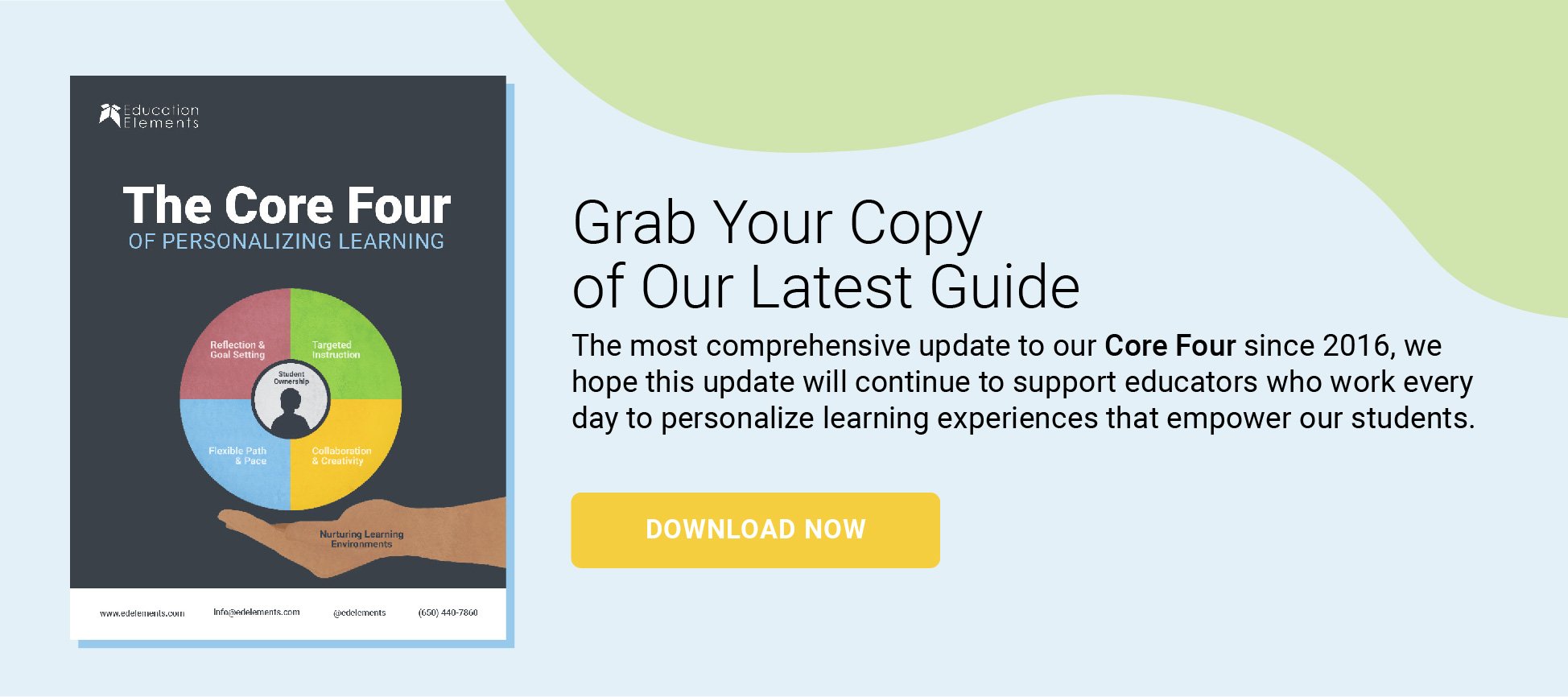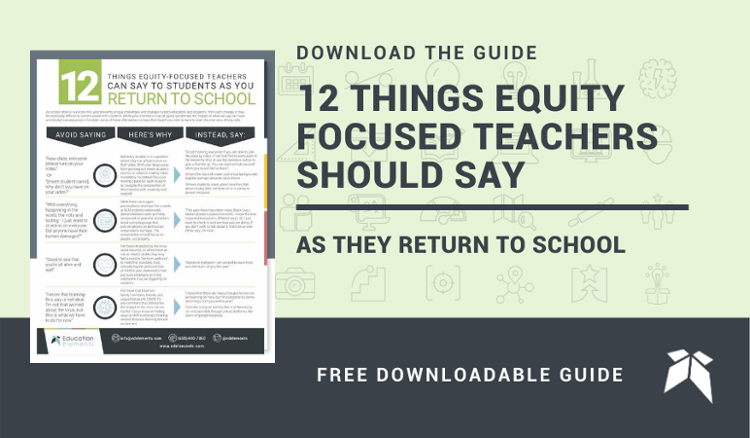In an effort to reconnect with students to truly understand their experience with virtual learning and what they will need from their teachers going forward in an educational landscape irrevocably impacted by this year’s events, we decided to embark upon a two-week long empathy interview tour with students themselves. We searched high and low - from reaching out to former students through email, connecting with former colleagues still in the classroom, to scouring Instagram and LinkedIn accounts. Not only did this allow for a mind-blowing retrospective of my twenty years in the classroom - what the students shared in an honest, open platform enlightened us to their relationship with school and opened our eyes to how kids are actually interfacing with the technology that has functioned, and will likely continue to function, as a central vehicle for instruction.
 We wanted to ensure that we connected with all student groups - from our most connected to school to our most marginalized - and thus offered multiple modes and forums through which students could give us their input. While this required an incredible amount of time, flexibility, and creativity on our end, the results were invaluable and certainly shaped the way we view education in 2020.
We wanted to ensure that we connected with all student groups - from our most connected to school to our most marginalized - and thus offered multiple modes and forums through which students could give us their input. While this required an incredible amount of time, flexibility, and creativity on our end, the results were invaluable and certainly shaped the way we view education in 2020.
Here is what we did:
-
- Sent surveys to student groups
- Held multiple focus groups on Zoom during both day and evening hours with a sign-up sheet, multiple calendar invites and email reminders
- Accepted video submissions of students answering guiding questions disseminated via email
- Created digital permission slips for students under 18 years old
- Conducted group FaceTime calls
We’d like to share some trends we identified in our conversations in the hopes you can begin to tap into every students’ potential.
Trend 1: Students recognize and appreciate your attempts to build a genuine community and a sense of mentorship in the classroom, virtual or in-person.
“I understand it more when we’re hands-on and it keeps me more focused.”
- Build time for connecting students to each other. Large classes can make it difficult for students to make friends and to find their place. Intentional community-building activities can help to address these.
- Help students develop their learning styles. The more they know about the kind of learner they are, the more they will feel empowered to make learning their own. Once they’ve identified their learning styles, encourage them to discuss how they can use this information in the classroom.
- Co-create classroom norms with your students. First, determine which existing policies are flexible and open to change vs. those that need to stay in place for student learning and wellness.
Trend 2: Students will see themselves as leaders if they receive validation and support to put their ideas into fruition.
“Introduce new things to introduce new possibilities, you never know when that might trigger for someone.”
- Introduce students to as many new experiences as possible—students are more willing to try new things than adults. Adults forget this and make assumptions.
- Provide your students time to reflect on their definition of success. Remind them that their definitions may change often as they continuously reflect on current goals.
- Connect your students' experiences, identities, and histories to that of historical figures to drive home the point of their leadership potential.
Trend 3: Go the extra mile to set up an engaging virtual learning experience for your students.
- Video instruction might not work for all of your students. Mix it up with live sessions.
- Use student academic interest as a data point to form groups instead of just focusing on ability or work ethic.
- Bring your virtual classroom to life by creating a virtual mural using chart paper and/or post-its. Share messages you know your students will appreciate, laugh at, or reflect on.
A key lesson we learned is that you can’t build an equitable classroom if you haven’t taken the time to truly understand what your specific population of students need. A classroom is most impactful when it's tailored to those who populate the space, and it takes an intentional approach to design the perfect fit. Engaging in a dialogue with your students will be a worthy investment, and we found success employing a range of outreach strategies. The good news is that if you’re reading this it means you already have everything you need to begin that dialogue - here’s what you can do:
- Send Surveys: Use a digital platform of your choice to ask a few questions consistently. This will help build the relatively foreign habit within your students to give you feedback and share their feelings. Be transparent when you incorporate any of their ideas and you’ll teach an impactful lesson about the power of their words and your receptiveness to them.
- Embrace Digital Dialogue: Whether it’s our favorite message board, social media app, or family group chat, we’ve all gotten more comfortable communicating with peers and loved ones through these different mediums. It’s now time for educators to embrace these tools as a legitimate means of connecting with students. It doesn’t have to be all emojis and LOLs (unless you want it to be!); if there’s one thing young people are used to by this point, it's sharing (often oversharing) their complex thoughts and feelings online. We found messaging to be a great tool in establishing a direct line of communication between yourself and students. We received the most consistent responses through this method, and were most successful in establishing follow-up conversations through Zoom when we set it up through a messaging platform.
- Give Them a Reason to Check Their Email: Believe it or not, most students are used to checking their email; though they could use some work on responding more promptly and professionally. We found that this is often because students’ inboxes aren’t filled with messages that prompt a response. We used email primarily with older students to schedule zoom meetings and get a group’s feedback on a particular question. Email chains also made it easier to loop new stakeholders into our discussions.
- Setup Zoom Focus Groups: Gathering small groups together produced incredibly insightful discussions and gave us the most detailed responses regarding students’ feelings on the spring pivot to virtual learning and their thoughts on the ways schools were planning to reopen. Young people are aware that their voices aren’t consistently brought to the table, and feel that their needs are often taken into consideration when it's too late for demonstrable change to be made. We were blown away by the way students carried themselves and saw groups ranging from 5 to 25 quickly bond and create a space where everyone can bring their authentic selves to the conversation. While it is a time investment, we highly recommend this as being an effective method of building relationships, teacher to student and student to student.
- Meet Them Where They Are: Similar to our feelings about instant messaging, our team was initially uncomfortable with using tools like FaceTime; we wanted to respect a certain level of privacy with regards to sharing phone numbers. Due to the frequency of video meetings most people have had over the past few months, we reasoned that if a student or family identified video chatting through the phone then we would follow through with that request. We found that most young people preferred some form of video correspondence, and as stated earlier, believe that to be an impactful method of surfacing needs and trends.
- Build Reflection Opportunities into Your Lessons: There is never enough time for an educator, and time has become even more important and potentially more limited than before. Intentionally dedicate a portion of your instruction to opening up a dialogue with students about the why, what, and how around what they’re learning. Providing a deeper rationale around the relevance of their work will support them in following through with the increased expectations and accountabilities that come with a distance and hybrid learning environment.
- Prioritize Building Relationships During Live Sessions: Young people aren’t worried about navigating Zoom and they aren’t thinking about whether or not they have the right device or internet bandwidth to have their camera turned on. They are worried that they won’t have a fair chance at success if you don’t get to know them in-person. They feel like the social interactions they’re missing out on are being under-appreciated by their teachers and administrators. Use the precious time you have together to ease their concerns and demonstrate your authentic interest in their success and development.
While we don’t think it's necessarily a new idea to incorporate student voice, we know that many are uncertain about what they can do to bring the rich experience that comes from learning in a shared space to a virtual environment. Our team was surprised to find that a resounding sentiment coming from students of marginalized populations or challenging backgrounds was that they maintained the highest hopes and expectations around the impact their teacher could have on their lives. Many of them shared the notion that if one teacher recognized their potential that their academic careers would be forever altered. Educators often mis-categorize these students as being “disengaged,” and dedicate an exorbitant amount of time spinning their wheels around creative, and often distracting ways to reach their marginalized populations. Keep it simple, use the tools you have access to, and talk to them. You’ll gain valuable insights and clarity around how to best support your students in this difficult time.
More Virtual Learning reading
Blog: Tips For Setting Up An At-Home Learning Environment For Young Students
Blog: Adaptations for Flexible Learning
Blog: 7 Strategies to Develop Student Executive Functioning Skills for Remote Learning
Blog: Distance Learning Requires a Student-Centered Approach
Blog: Addressing Schooling Loss in Schools With These Four Strategies
Blog: Shifts in Professional Learning: more microlearning and virtual courses




